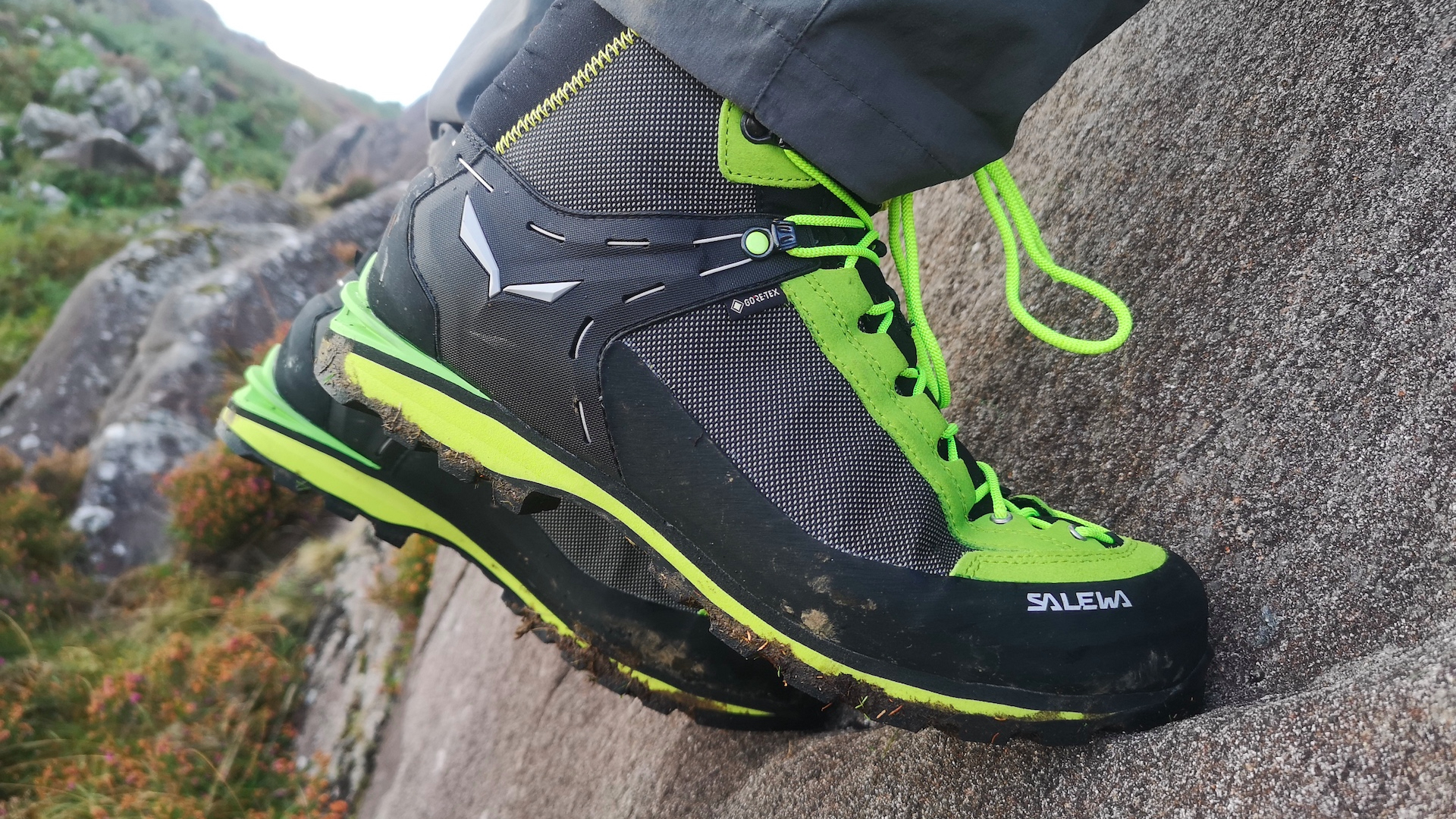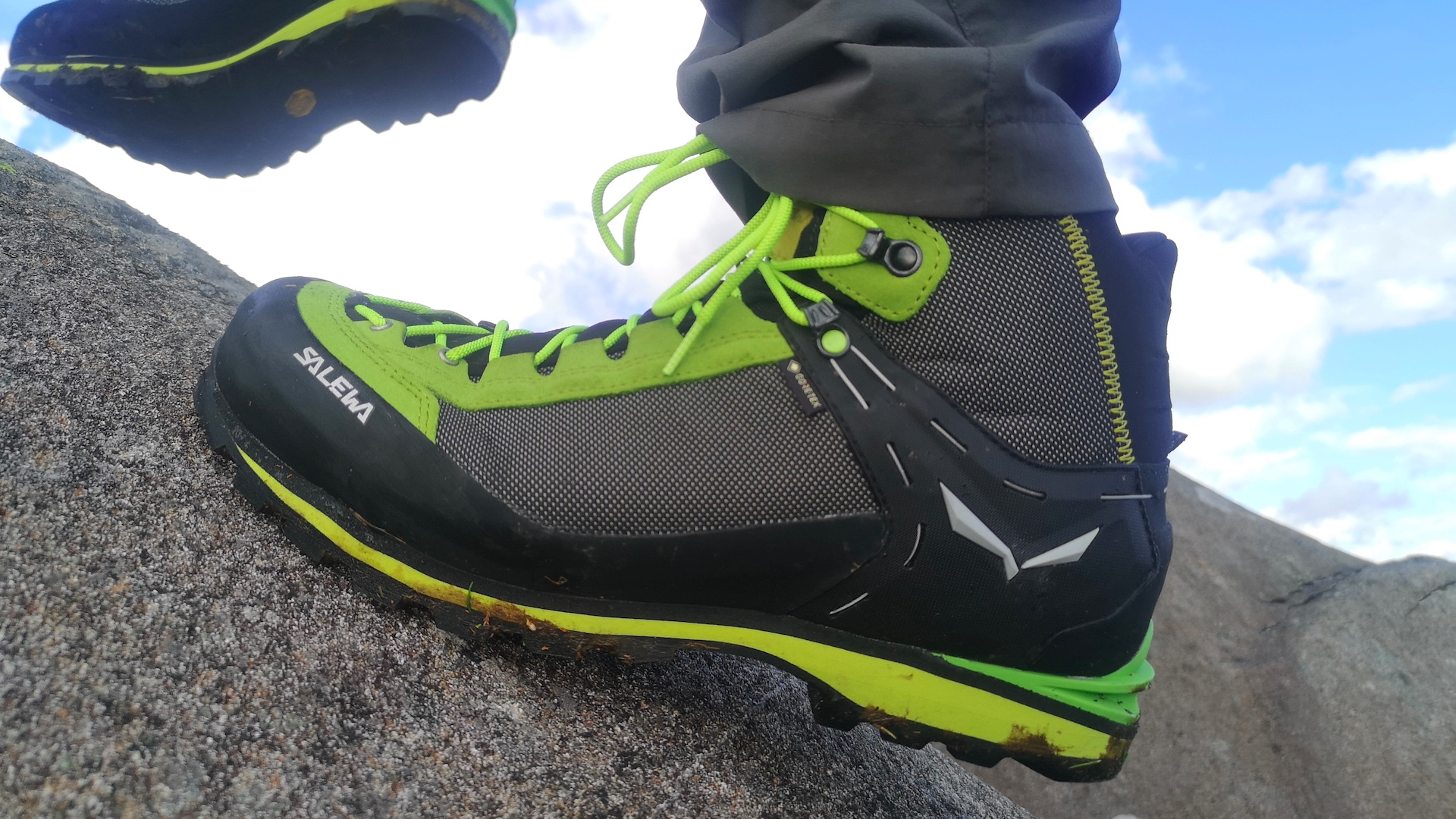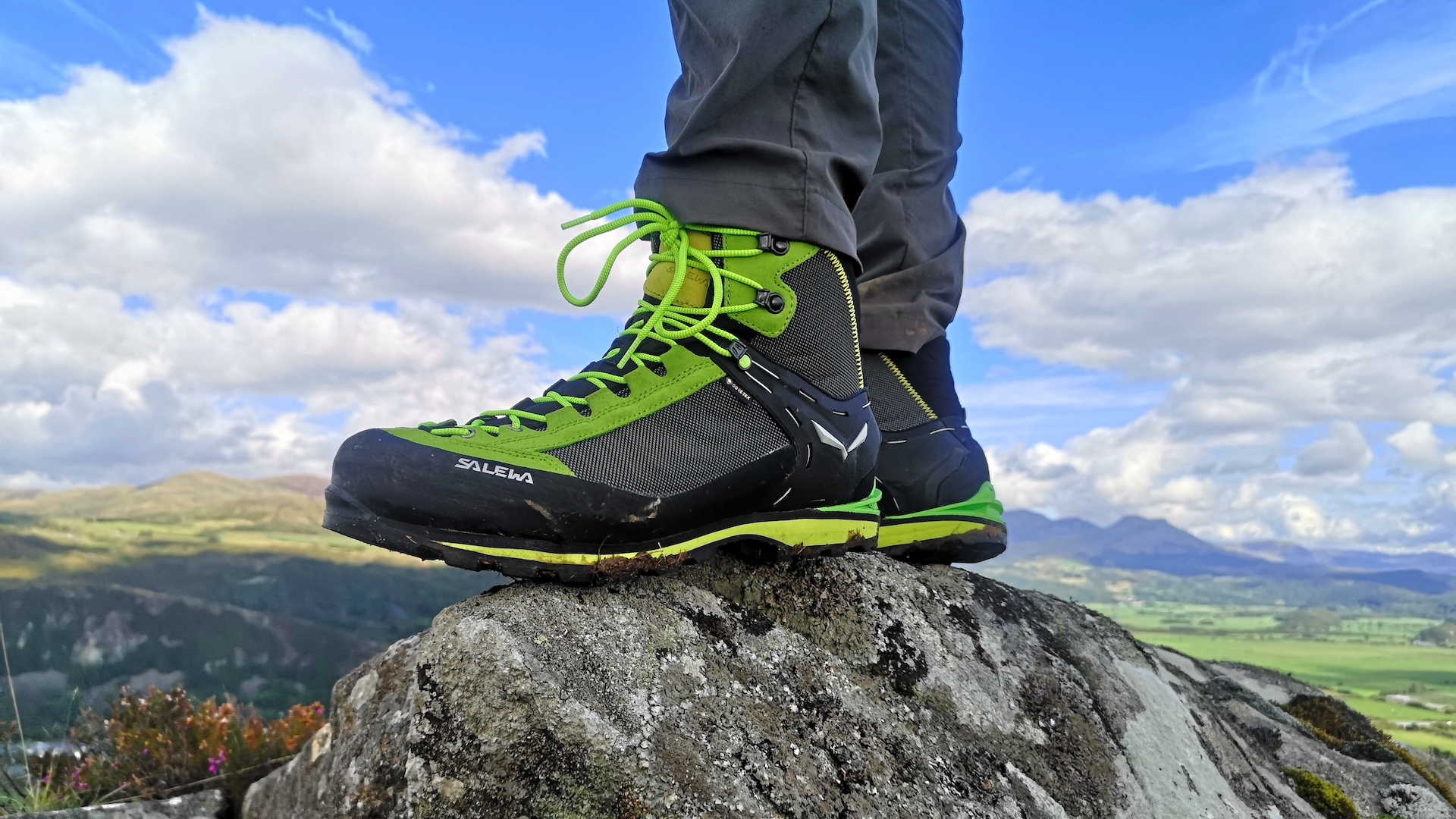Advnture Verdict
This versatile mountaineering boot undercuts most of its rivals when it comes to price, but delivers in terms of performance, offering B2 stiffness in a lightweight and precise package. If you prefer a close-fitting boot with plenty of feel underfoot, these are a great pick.
Pros
- +
Lightweight
- +
Good for medium to narrow feet
- +
Precision feel
Cons
- -
Limited ankle support
- -
Fabric uppers aren’t the most durable or protective
- -
Underfoot cushioning isn’t the best
You can trust Advnture
Salewa Crow GTX boot: first impressions
The Salewa Crow GTX boot comes from a German-Italian brand that has strong Alpine roots, and has built an enviable reputation for its apparel and equipment – including its hiking boots and winter hiking boots. The Salewa Crow GTX is actually the least expensive of Salewa’s technical mountain boots, but it’s a capable boot with a stiffened midsole and a rear heel welt that means it will take C2 crampons.
• List price: $290 (US) / £220 (UK)
• Weight per boot (size UK 12 / US 13): 860g / 1lb 14oz
• Materials used: Fabric uppers with suede leather panels and full rubber rand, Gore-Tex lining, Vibram New Mulaz outsole
• Sizes: Men’s UK 6.5-13; Women’s UK 3-9
And despite its relatively affordable price point, the Crow GTX employs many of the same Salewa technologies that characterize the brand’s higher-level offerings. This includes the unique 3F System, an external steel cable that wraps around the heel section and connects with the lace hook at the base of the ankle. This helps to pull the boot in tightly when laced, improving all-round ankle and heel support.
The boot also features a climbing-inspired to-toe lacing system for enhanced precision and a close fit. Lastly, a softshell Flex Collar at the rear of the ankle collar relieves pressure on the Achilles for increased comfort during descents.
The brand describes the Crow GTX as being suitable for “mixed summer use on general alpine terrain and alpine trekking”. That means reliable performance on both rock and snow. It’s built on a stiff but low-profile midsole to deliver stability and precision, with a Vibram New Mulaz rubber outsole. This combines a proven multi-terrain tread pattern with a forward climbing zone for better contact grip on rock.

Uppers are mainly made from an abrasion-resistant textured fabric, though there are some suede panels around the toe cap, laces and tongue. You also get a full rand for all-round protection. While this construction is likely to be slightly less durable than an all-leather boot, it does reduce the weight and cost. And it’s still fairly tough, providing decent protection for the foot, whilst fending off rock and scree. A Gore-Tex Performance Comfort lining also ensures the boot delivers fully waterproof protection and breathability in wet conditions.
Salewa Crow GTX boot: on the trails

This is a neat-looking boot with a similarly close-fitting last. It has a slim heel that cups and supports the foot nicely, with a slightly asymmetric toe box. This gives plenty of power and feel at the big toe for easier placements when climbing and scrambling. The low-profile design also keeps weight down and contributes to an overall feel of agility and precision.
It’s fairly low in volume overall, so we’d say it’s a boot best suited to medium or slightly narrower feet – especially since Salewa provides an extra volume-reducing insole in the box, which is a nice touch. The 3F three-point heel system locks everything in nice and tight, so we experienced no heel slip on test.
All the latest inspiration, tips and guides to help you plan your next Advnture!
The supple cutaway ankle cuff still gives loads of flex. This is great for steep descents, as it reduces the pressure on the Achilles tendon that you sometimes get with higher boots or those with stiffer ankle collars. We also appreciated the slightly lower cut when scrambling and rock-hopping, as it gives excellent freedom of movement, not dissimilar to wearing approach shoes. On the other hand, this might be a drawback if you prefer having plenty of extra ankle protection and support.

The midsole is stiff enough to take a C2 crampon, with a plastic heel welt for easy and efficient fitting. It feels stable underfoot yet flexes enough for relatively easy walking. Having said that, the underfoot cushioning isn’t the most luxurious, and this boot can feel a bit hard and board-like, especially on longer mountain days – though adding a plusher insole helps considerably.
While it’s certainly capable enough to wear in winter conditions, the fabric uppers aren’t the warmest, despite the Gore-Tex lining. Again, this can be mitigated by wearing a thick mountaineering sock.
Still, without a crampon fitted, the outsole performed well on mixed terrain. A front climbing zone provides solid contact grip for scrambling, and the lugs clear out mud well, despite not being particularly aggressive.
If you want a light but capable boot that offers plenty of precision and feel – and don’t mind sacrificing a bit of outright warmth and protection – the Salewa Crow GTX is still a great choice.
An outdoors writer and editor, Matt Jones has been testing kit in the field for nearly a decade. Having worked for both the Ramblers and the Scouts, he knows one or two things about walking and camping, and loves all things adventure, particularly long-distance backpacking, wild camping and climbing mountains – especially in Wales. He’s based in Snowdonia and last year thru-hiked the Cambrian Way, which runs for 298 miles from Cardiff to Conwy, with a total ascent of 73,700 feet – that’s nearly 2½ times the height of Everest. Follow Matt on Instagram and Twitter.


